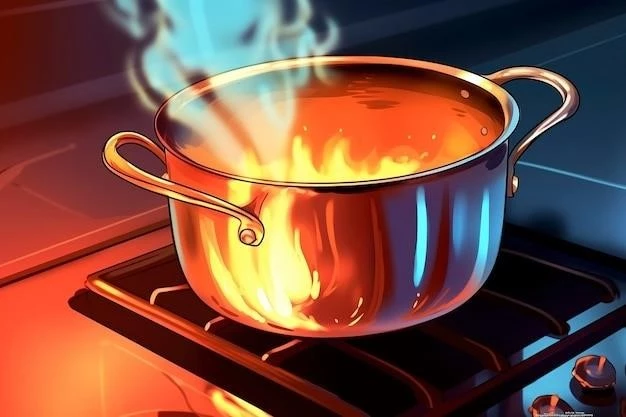Heat is the driving force behind the remarkable transformation that occurs when raw ingredients are transformed into a delicious meal. Understanding the role of heat in cooking is essential for any aspiring chef or home cook who wants to master the art of creating flavorful and visually appealing dishes. This article delves into the science behind heat transfer during cooking, explores various cooking methods, and highlights how heat influences the final outcome of our culinary creations.

Understanding Heat Transfer
At its core, cooking is about applying heat to food to alter its chemical and physical properties. This transfer of heat energy can occur through three primary mechanisms:
- Conduction: This method involves the transfer of heat through direct contact between molecules. A prime example is pan-frying a steak, where the heat from the burner is conducted through the pan to the meat’s surface.
- Convection: Heat transfer by convection takes place through the movement of fluids, such as liquids or gases. Think of a pot of boiling water, where heat is distributed throughout the water via convection currents.
- Radiation: This method involves the transfer of heat through electromagnetic waves. Grilling and broiling are classic examples of radiation, where heat radiates from the source and cooks the food directly.
Most cooking methods utilize a combination of these heat transfer mechanisms. For instance, roasting a chicken in the oven involves conduction from the hot air surrounding the chicken, convection as the hot air circulates within the oven, and radiation from the oven walls.
Cooking Methods and Heat Application
Culinary techniques can be broadly categorized into two main groups based on the primary medium of heat transfer:
1. Dry Heat Cooking
Dry heat cooking methods rely on the application of heat without the presence of a significant amount of moisture. These methods are ideal for achieving browning, crisping, and developing rich flavors. Some common dry heat cooking methods include:
- Baking: Cooking food in an enclosed environment, typically an oven, using hot air. Examples: cakes, bread, cookies.
- Roasting: Similar to baking, but often at higher temperatures to encourage browning. Examples: meats, vegetables.
- Grilling: Cooking food quickly over direct, high heat. Examples: steaks, burgers, vegetables.
- Broiling: Similar to grilling, but the heat source is above the food. Examples: fish, thin cuts of meat.
- Sautéing: Cooking food quickly in a small amount of fat over medium-high heat. Examples: vegetables, stir-fries.
- Frying: Cooking food in hot oil. Examples: french fries, fried chicken.
2. Moist Heat Cooking
Moist heat cooking methods utilize liquids, such as water, stock, or wine, as the primary medium for heat transfer. These methods are well-suited for tenderizing tougher cuts of meat, cooking vegetables until soft, and creating flavorful sauces and soups. Examples of moist heat cooking include:
- Boiling: Cooking food in water at a high temperature, characterized by bubbles breaking on the surface. Examples: pasta, eggs, vegetables.
- Simmering: Cooking food in liquid at a lower temperature than boiling, with gentle bubbles. Examples: soups, stews, sauces.
- Poaching: Cooking food gently in liquid just below boiling point. Examples: eggs, fish, delicate fruits.
- Steaming: Cooking food using the heat from steam, typically in a steamer basket. Examples: vegetables, dumplings, fish.
- Braising: A combination method involving searing food and then slow-cooking it in liquid. Examples: pot roast, short ribs.

The Impact of Heat on Food
The application of heat triggers a fascinating array of chemical and physical changes in food, ultimately determining its texture, flavor, and appearance. Here are some key transformations:
- Protein Denaturation: Heat causes proteins to unwind and coagulate, leading to changes in texture. Think of the firming of an egg white when cooked.
- Gelatinization: Starches absorb water and swell when heated, resulting in thickening. This is evident in sauces and gravy.
- Caramelization: Sugars in food brown when heated, creating complex flavors and aromas. The browning of onions or the crust of bread are examples.
- Maillard Reaction: A chemical reaction between amino acids and sugars at high temperatures, producing a brown color and a wide range of desirable flavors.
- Softening of Tissues: Heat breaks down tough connective tissues in meat, making it more tender. It also softens vegetables, making them easier to digest.
Conclusion
Mastering the role of heat in cooking is an ongoing journey of experimentation and discovery. By understanding the science behind heat transfer, exploring various cooking methods, and appreciating the impact of heat on food, we can elevate our culinary skills and create dishes that are both delicious and visually appealing. From the precise control of a simmer to the intense heat of a grill, heat remains the essential element that unlocks a world of culinary possibilities.










